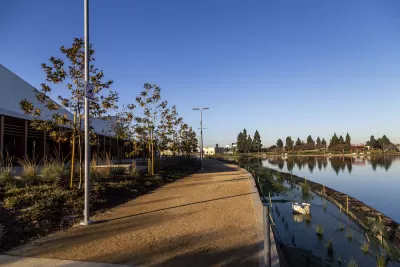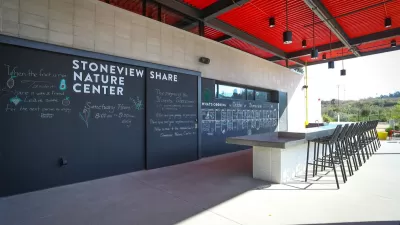Los Angeles County's popular Parks After Dark program continues to serve communities in need and offer multiple important benefits, as documented in a recent UCLA study.

For an eight-week period each summer, the Los Angeles County Department of Parks and Recreation (DPR) extends hours of park operation by several hours at 34 participating parks, offering evening events as part of its Parks After Dark program. The program offers family entertainment (like movies, concerts, arts and crafts, and free meals), sports and recreational activities (like swimming and dance), cultural and educational programming (like healthy cooking and financial literacy classes), and employment and volunteer opportunities for youth and adults.
PAD parks also host resource fairs through which public agencies and community-based organizations provide health, social, economic, and legal resources to participants. Throughout all events, deputies from the Sheriff’s Department patrol and engage in activities alongside participants, which help to ensure safety and foster positive interactions between law enforcement and community members.
The program outcomes and benefits of PAD have been well-documented. Key findings from a new evaluation by the UCLA Center for Health Policy Research include:
- A survey of attendees in 2023 found that 93% felt safe at PAD.
- Of attendees who did not meet the recommended activity guidelines for their age, 76% participated in at least one exercise or sports program at PAD.
- The vast majority of those surveyed expressed high levels of satisfaction with 97% saying they would attend again.
For more information, including the detailed data and recommendations, please read the report available here.
FULL STORY: As L.A. County nighttime recreation program expands scope, success largely continues

Alabama: Trump Terminates Settlements for Black Communities Harmed By Raw Sewage
Trump deemed the landmark civil rights agreement “illegal DEI and environmental justice policy.”

Planetizen Federal Action Tracker
A weekly monitor of how Trump’s orders and actions are impacting planners and planning in America.

How Atlanta Built 7,000 Housing Units in 3 Years
The city’s comprehensive, neighborhood-focused housing strategy focuses on identifying properties and land that can be repurposed for housing and encouraging development in underserved neighborhoods.

In Both Crashes and Crime, Public Transportation is Far Safer than Driving
Contrary to popular assumptions, public transportation has far lower crash and crime rates than automobile travel. For safer communities, improve and encourage transit travel.

Report: Zoning Reforms Should Complement Nashville’s Ambitious Transit Plan
Without reform, restrictive zoning codes will limit the impact of the city’s planned transit expansion and could exclude some of the residents who depend on transit the most.

Judge Orders Release of Frozen IRA, IIJA Funding
The decision is a victory for environmental groups who charged that freezing funds for critical infrastructure and disaster response programs caused “real and irreparable harm” to communities.
Urban Design for Planners 1: Software Tools
This six-course series explores essential urban design concepts using open source software and equips planners with the tools they need to participate fully in the urban design process.
Planning for Universal Design
Learn the tools for implementing Universal Design in planning regulations.
Caltrans
Smith Gee Studio
Institute for Housing and Urban Development Studies (IHS)
City of Grandview
Harvard GSD Executive Education
Toledo-Lucas County Plan Commissions
Salt Lake City
NYU Wagner Graduate School of Public Service





























